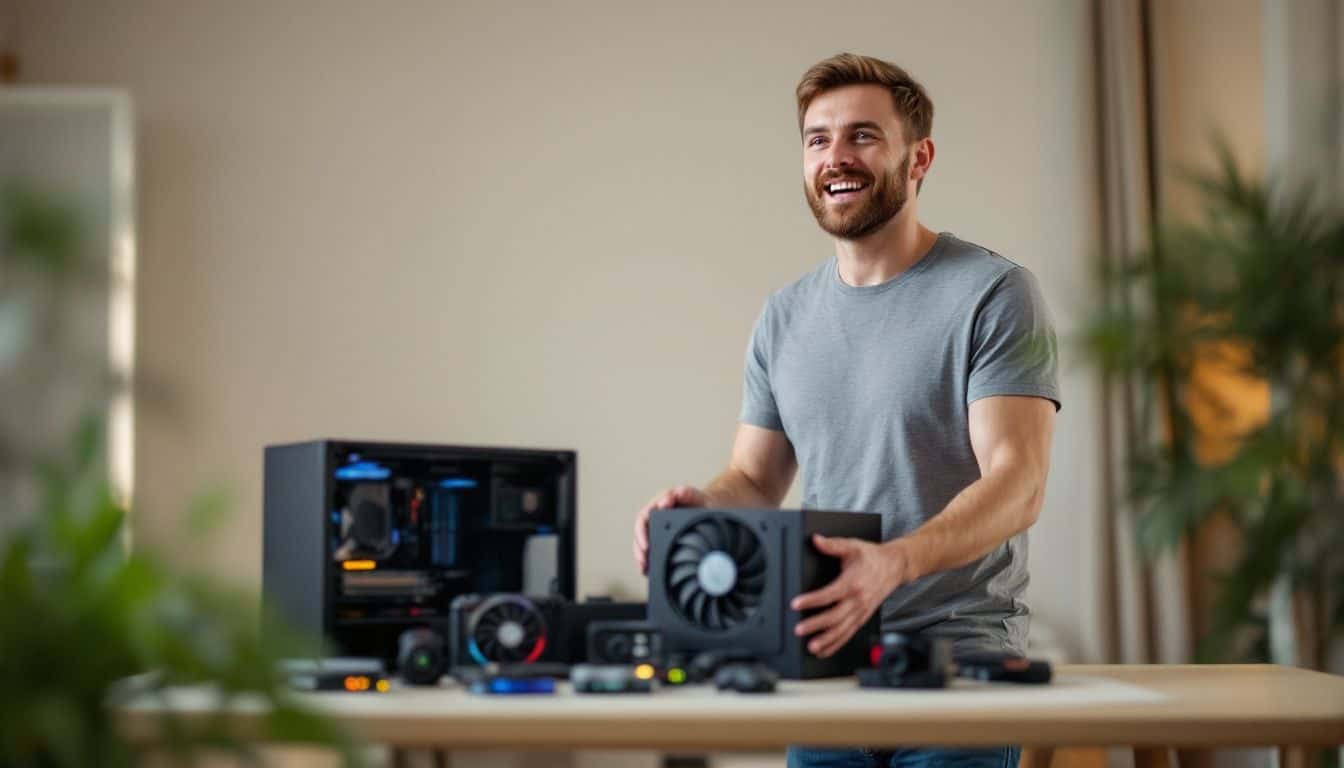Many gamers struggle to understand how gaming computers differ from regular PCs. Gaming computers pack more power with special parts like high-end graphics cards and faster processors.
I will show you six key upgrades that make gaming PCs stand out from basic computers. These upgrades will help you build a monster gaming rig that crushes any game you throw at it.
Key Takeaways
Gaming PCs need powerful graphics cards like GTX Titan and at least 6-8 CPU cores for smooth gameplay. Tests show only a 15% boost when moving from 6 to 8 cores.
Modern gaming rigs require at least 16GB of DDR4 3600MHz RAM, with DDR5 offering double the bandwidth. The latest PCIe Gen4 and Gen5 NVMe SSDs reach speeds over 10,000 MB/s, making games load faster.
Advanced cooling systems use either air or liquid cooling to prevent thermal throttling. High refresh rate monitors (144Hz, 240Hz, or 360Hz) work with graphics cards to create smoother gameplay.
Gaming computers allow easy upgrades through smart motherboard choices. AM5 boards support current Ryzen 7000 and future Ryzen 9000 CPUs, making long-term upgrades possible.
Tests show moving from 16MB to 20MB CPU cache gives up to 5% more speed. Keeping SSDs under 80% full helps maintain top speeds and extends drive life.
Table of Contents
Enhancing Graphics Performance in Gaming Computers
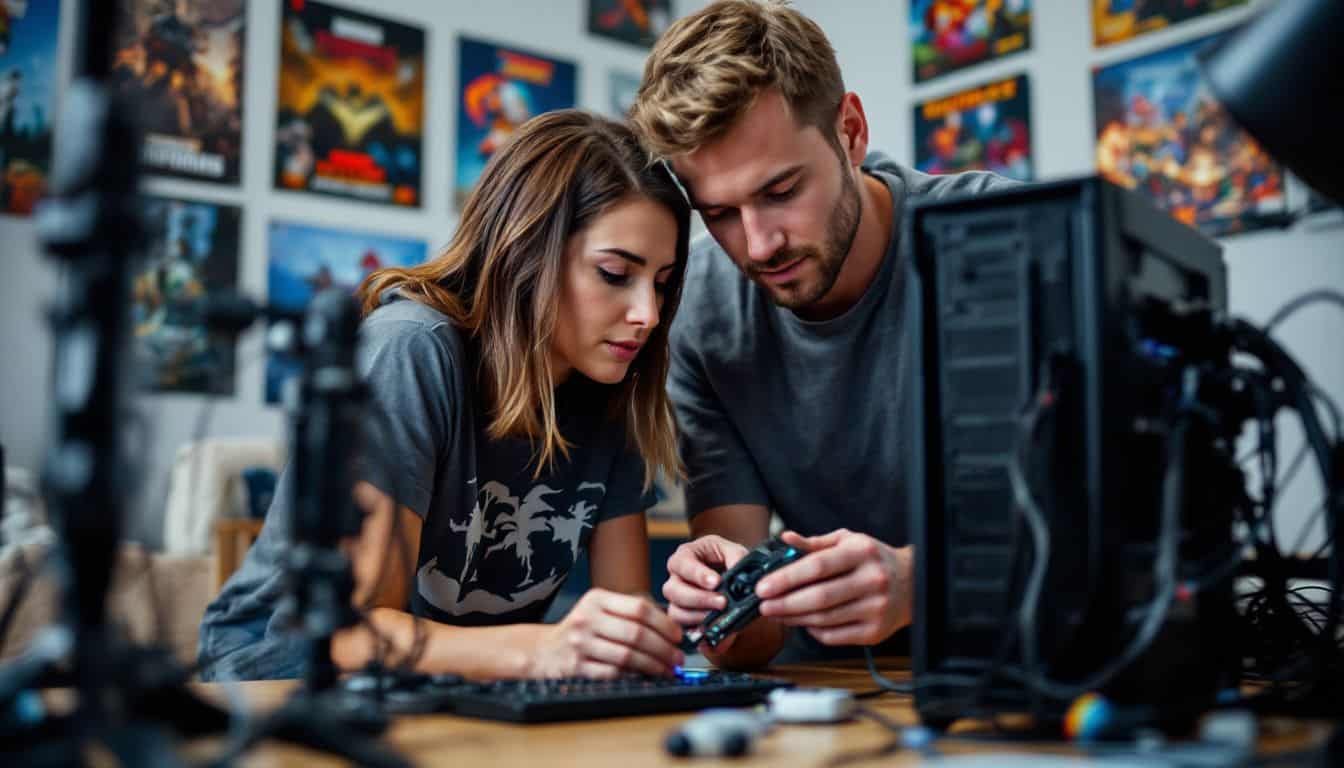
Gaming computers need powerful graphics cards to process complex visual data at high speeds. A strong GPU handles intense graphics tasks like ray tracing and high-resolution textures while keeping your games smooth and lag-free.
Utilizing high-power discrete graphics cards
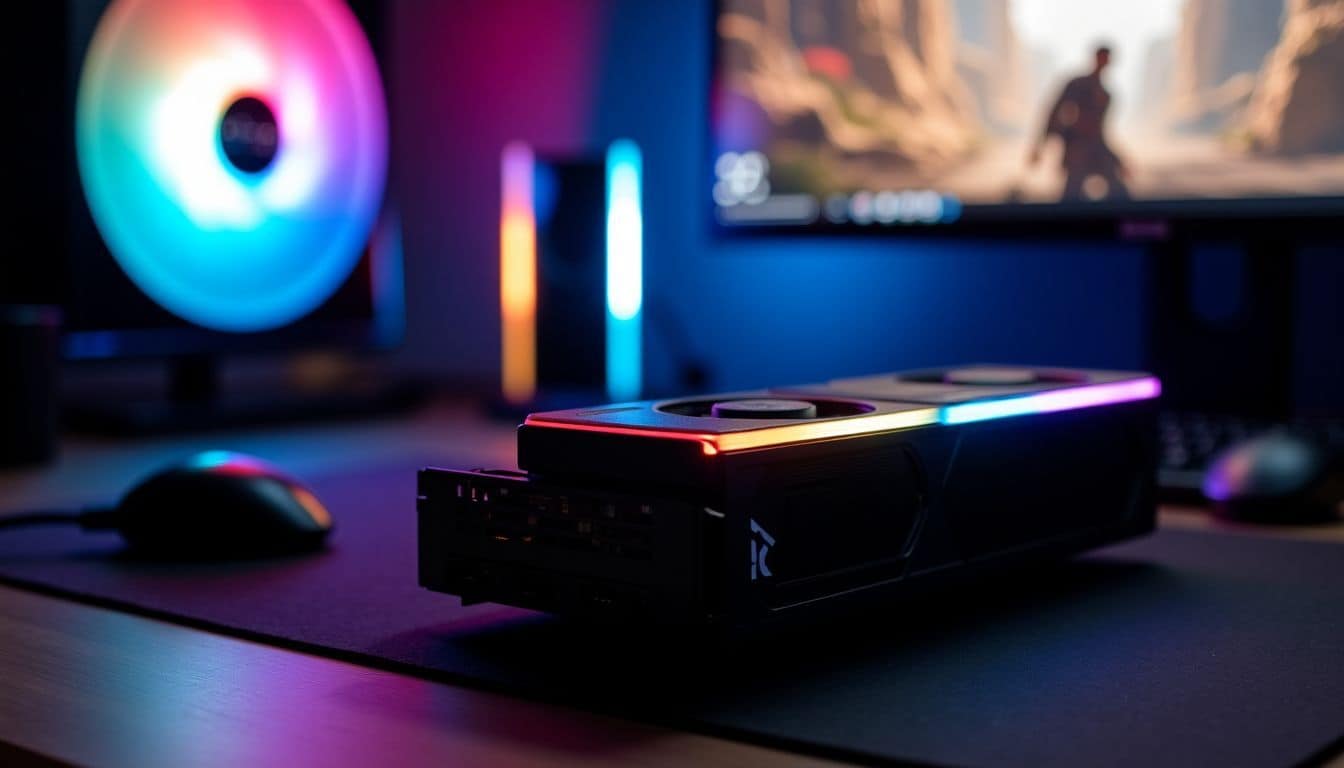 Discrete graphics cards stand as the heart of any serious gaming computer. These powerful GPUs handle complex graphics tasks better than basic integrated graphics. Modern cards like the GTX Titan process game data with superior efficiency and architecture.
Discrete graphics cards stand as the heart of any serious gaming computer. These powerful GPUs handle complex graphics tasks better than basic integrated graphics. Modern cards like the GTX Titan process game data with superior efficiency and architecture.
The cards make games run smoother with higher frame rates and better visual quality. A dedicated GPU manages textures, lighting, and shadows without putting stress on the main processor, whether you’re playing a graphically intense game like S.T.A.L.K.E.R 2 or the latest Bitcoin casino UK game.
High-power graphics cards excel at parallel processing through multiple cores. The GPU’s memory bandwidth affects how fast it can move data between components. Top cards use fast GDDR6 memory to prevent performance bottlenecks during intense gaming sessions.
Raw clock speeds don’t tell the whole story – a GPU’s architecture and memory bandwidth are what truly define its gaming performance. – Tech Enthusiast Magazine
The latest NVIDIA and AMD cards pack more CUDA cores and stream processors than ever before. These improvements push frame rates higher while keeping temperatures in check through better cooling systems.
Advancing Processor Capabilities for Gaming

Modern gaming CPUs pack more cores and larger cache sizes to handle intense gaming loads, making your favorite games run smoother and faster – read on to discover how these processors take your gaming to new heights.
Integrating CPUs with more cores and cache

Gaming computers need strong processors to handle intense gameplay. Most regular PCs use quad-core CPUs, but gaming rigs pack 6 or 8 cores for better performance. The AMD Ryzen and Intel i7 processors excel at running demanding games like Cyberpunk 2077 and Alan Wake 2.
These CPUs come with larger L3 cache sizes, giving up to 5% more speed when moving from 16MB to 20MB cache.
CPU cores matter less after you hit six cores in most games. Tests show only a 15% boost going from 6 to 8 cores. AMD’s latest Zen 3 processors prove this point – they run games just as well with 6 cores as they do with 16 cores.
The sweet spot sits at 6–8 cores for most gaming tasks. These processors handle both gaming and background tasks like Discord or streaming without breaking a sweat.
Optimizing Memory and Storage for Gaming Performance
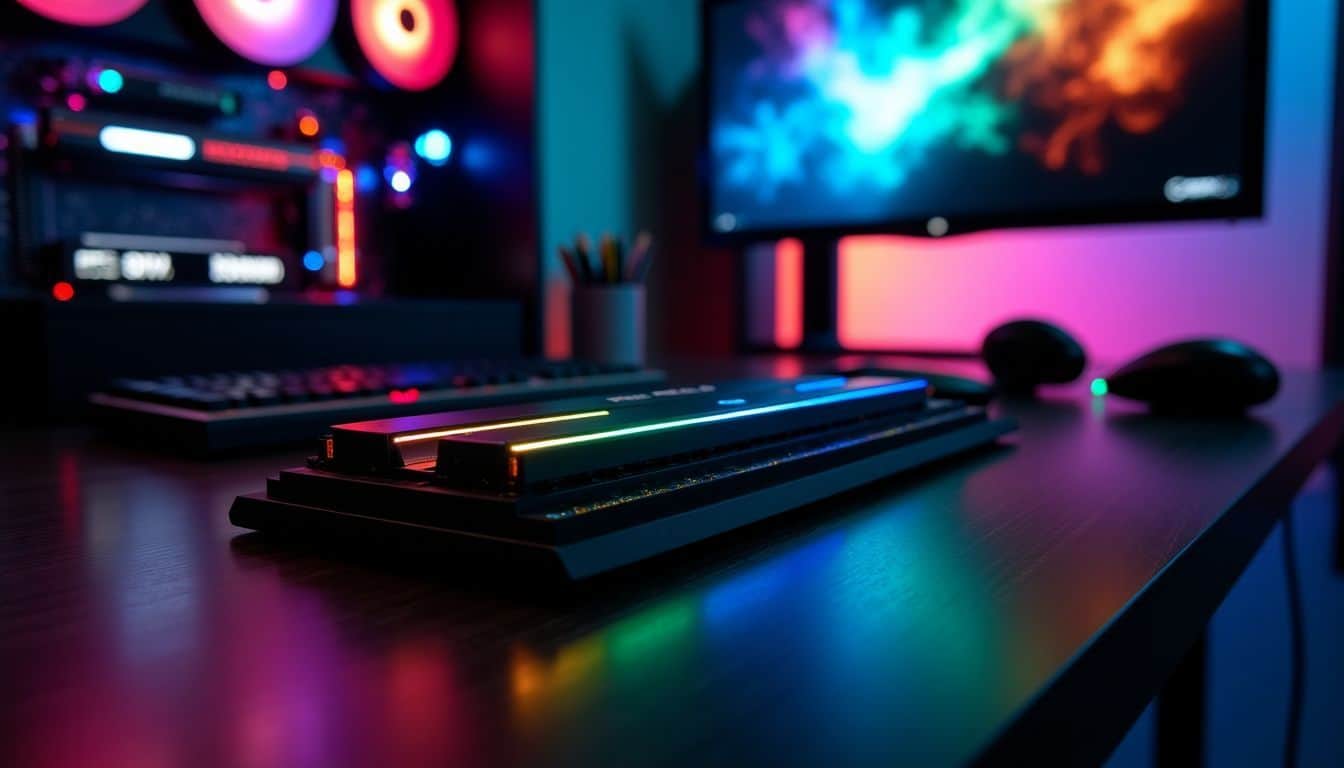
Gaming computers need fast memory and storage to load games in seconds. Your gaming rig must combine DDR5 RAM with NVMe SSDs to handle massive game files and textures without lag.
Implementing high-performance RAM
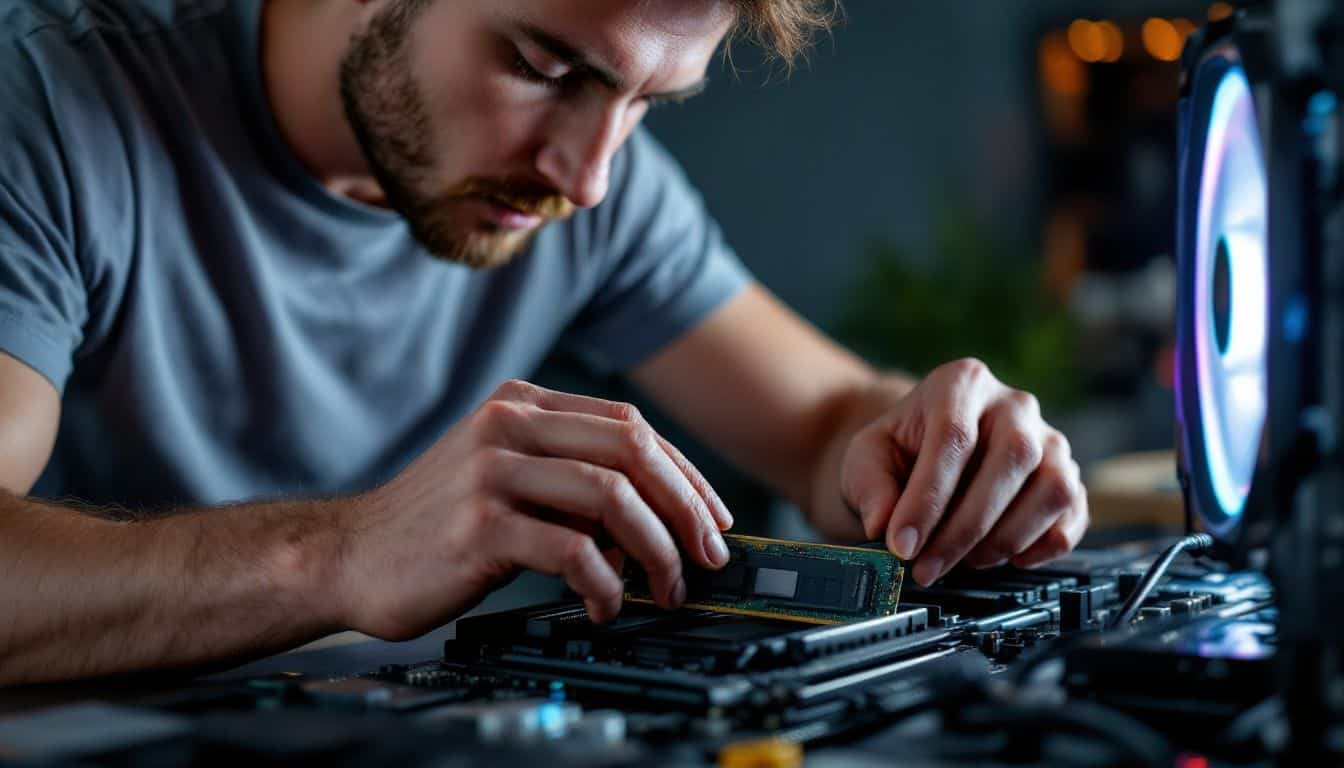
High-performance RAM stands as a crucial upgrade for superior PC performance. Modern systems need at least 16GB of RAM, with DDR4 3600 MHz CL16 as the sweet spot for budget builds.
I learned this while building my first gaming rig last summer. The setup runs faster with dual-channel RAM, which doubles the data flow between memory and controller.
RAM is the lifeline of smooth gaming performance – skimp on it, and you’ll feel the pain in every frame.
DDR5 RAM marks the latest leap in memory tech, offering twice the bandwidth of DDR4 with less power draw. My recent tests with different kinds of online games showed that low RAM causes nasty problems like screen flickers and FPS drops.
The motherboard must match your RAM choice – check the QVL list before buying DDR4 or DDR5 sticks. Fast RAM speeds up load times and keeps games running smooth.
Configuring high-speed solid-state drives (SSDs)
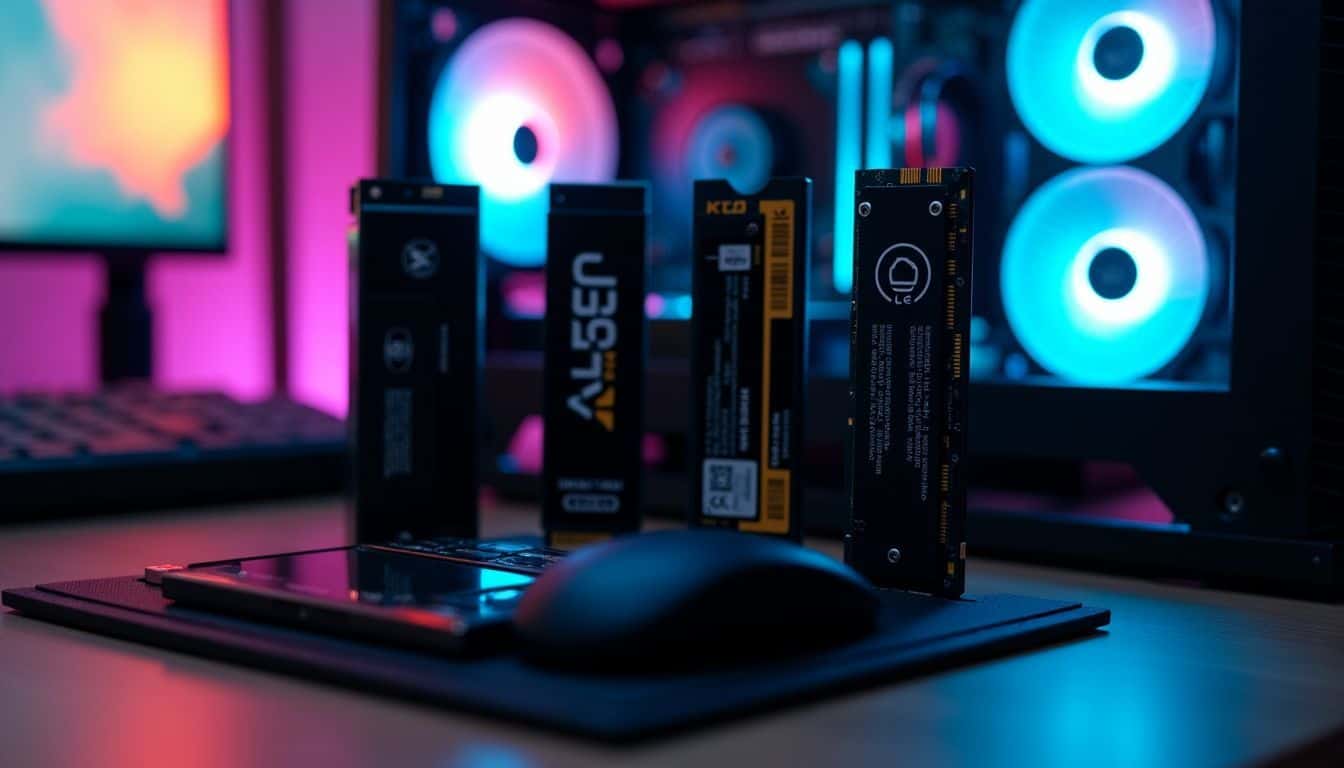
Fast RAM works best with speedy storage drives to create smooth gaming performance. Modern gaming computers need solid-state drives (SSDs) that can handle massive game files and load them quickly.
The latest PCIe Gen4 and Gen5 NVMe SSDs reach speeds over 10,000 MB/s, leaving older SATA SSDs in the dust.
Smart gamers pick drives like the WD Black SN850 for its blazing 7000 MB/s read speeds. Many builders mix different SSDs – a fast boot drive paired with larger game storage drives works great.
The Intel 660p serves well as a roomy 2TB game library, while a Samsung 970 EVO makes an excellent 1TB system drive. Keeping SSDs under 80% full helps maintain top speeds and extends drive life.
A mix of drives lets gamers store more games without breaking the bank on premium SSDs.
Innovating Cooling Systems for Gaming Rigs
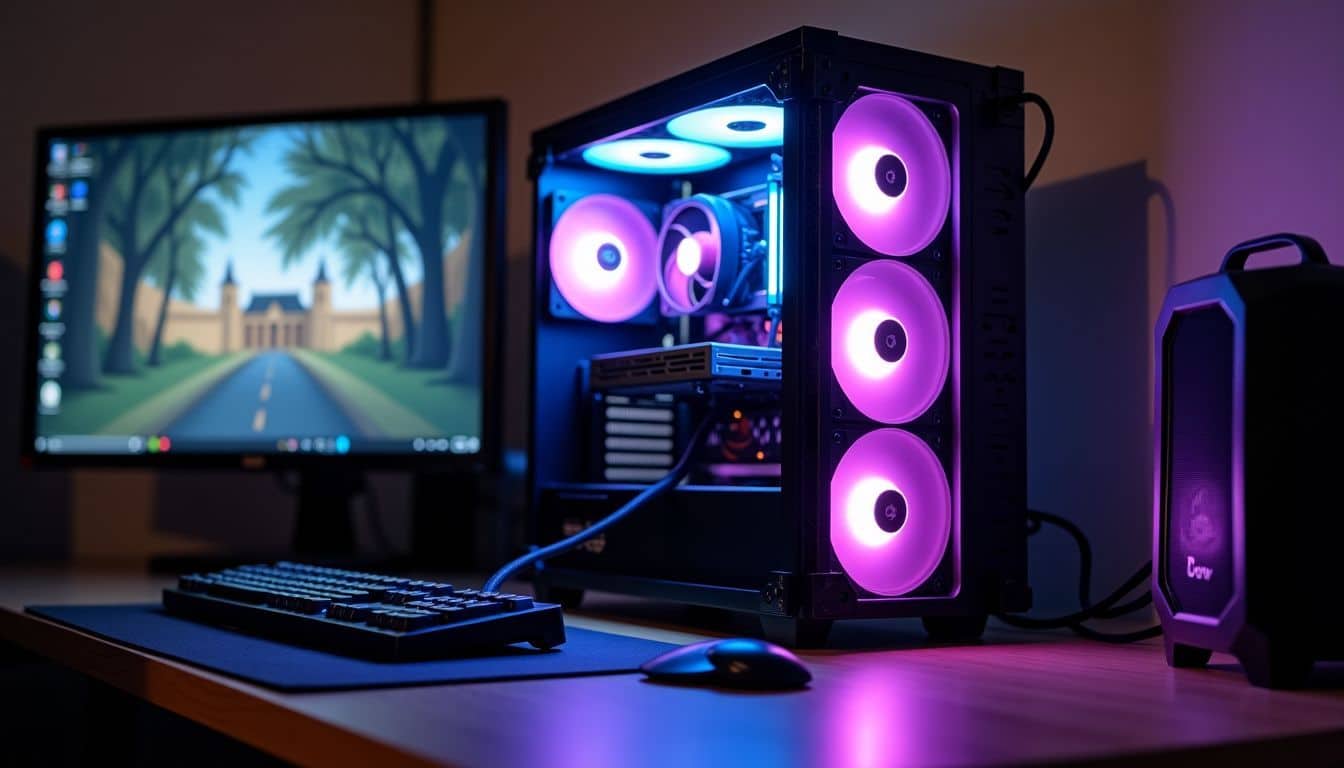
Gaming rigs need strong cooling systems to handle the intense heat from high-performance parts. Advanced liquid cooling and multiple case fans keep your CPU and GPU running at peak speeds without thermal throttling.
Employing advanced cooling hardware

Advanced cooling systems stand as the backbone of high-performance gaming computers. Custom gaming PCs need strong cooling solutions to handle their powerful CPUs and GPUs. Most builds use either air cooling with case fans or liquid cooling systems to keep temperatures low.
These cooling methods prevent system crashes and maintain peak performance during intense gaming sessions.
Modern cooling hardware has evolved beyond basic heat management. Liquid cooling systems now offer precise temperature control through specialized pumps and radiators. Air cooling solutions feature multiple case fans with smart positioning to create optimal airflow paths.
The right cooling setup makes the difference between stable gameplay and thermal throttling. Your choice of CPU cooler, case fans, and overall airflow design directly impacts gaming performance.
Extending Display Support for Gaming Computers
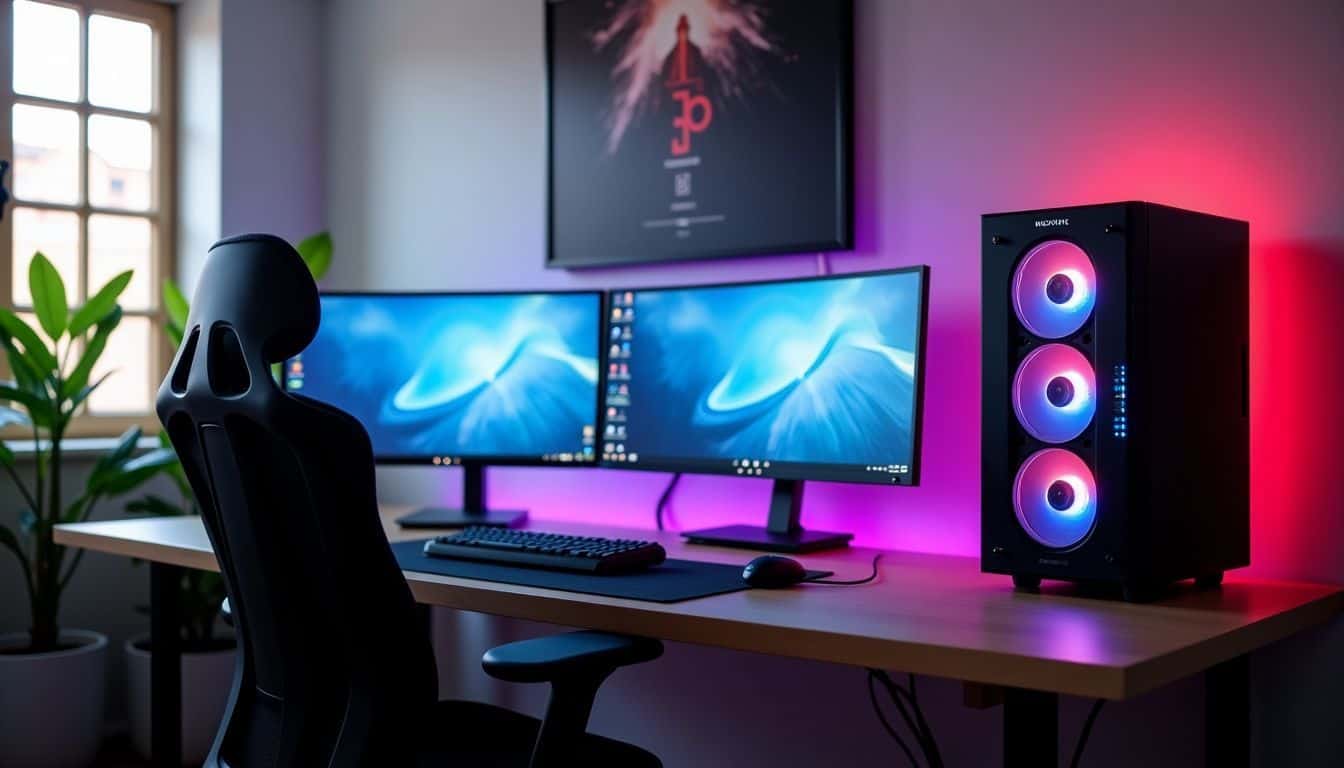
Modern gaming computers support multiple high refresh rate monitors through advanced graphics cards. These displays reduce screen tearing and create smoother gameplay at 144Hz, 240Hz, or even 360Hz refresh rates.
Supporting compatibility with faster refresh rate monitors
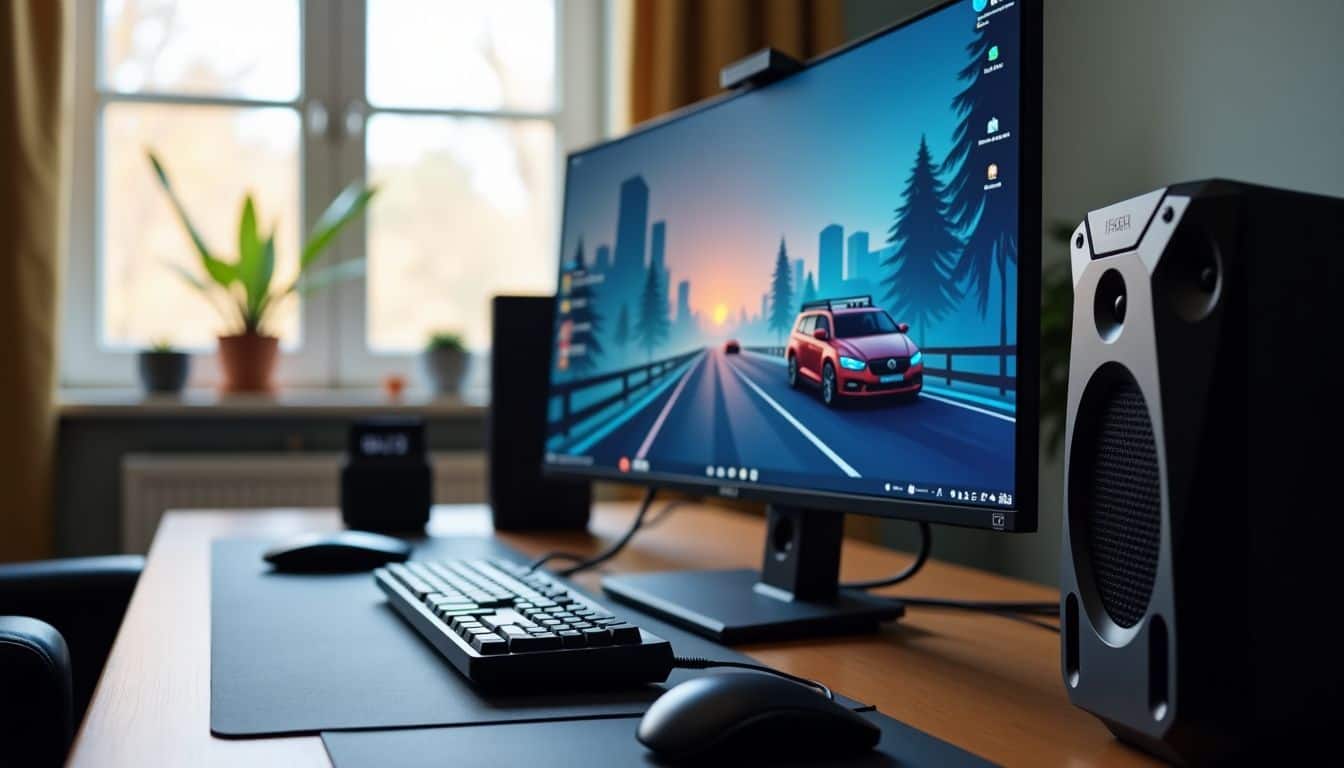
Gaming monitors with high refresh rates make a huge difference in gameplay quality. Standard 60Hz displays limit smooth motion, while 144Hz monitors show more frames each second. Your graphics card and CPU must work together to push enough frames to match these faster displays.
Your gaming setup needs proper sync between monitor refresh rates and frame production. VSync and adaptive sync technologies handle this task by matching your GPU’s output to your display’s capabilities.
The monitor’s refresh rate must align with the frames your system generates. Fast refresh rates demand strong processing power from both the CPU and GPU. I upgraded my basic 60Hz monitor to a 144Hz display last month, and the smoother gameplay gave me better control in first-person shooters.
Customization Options in Gaming Computers
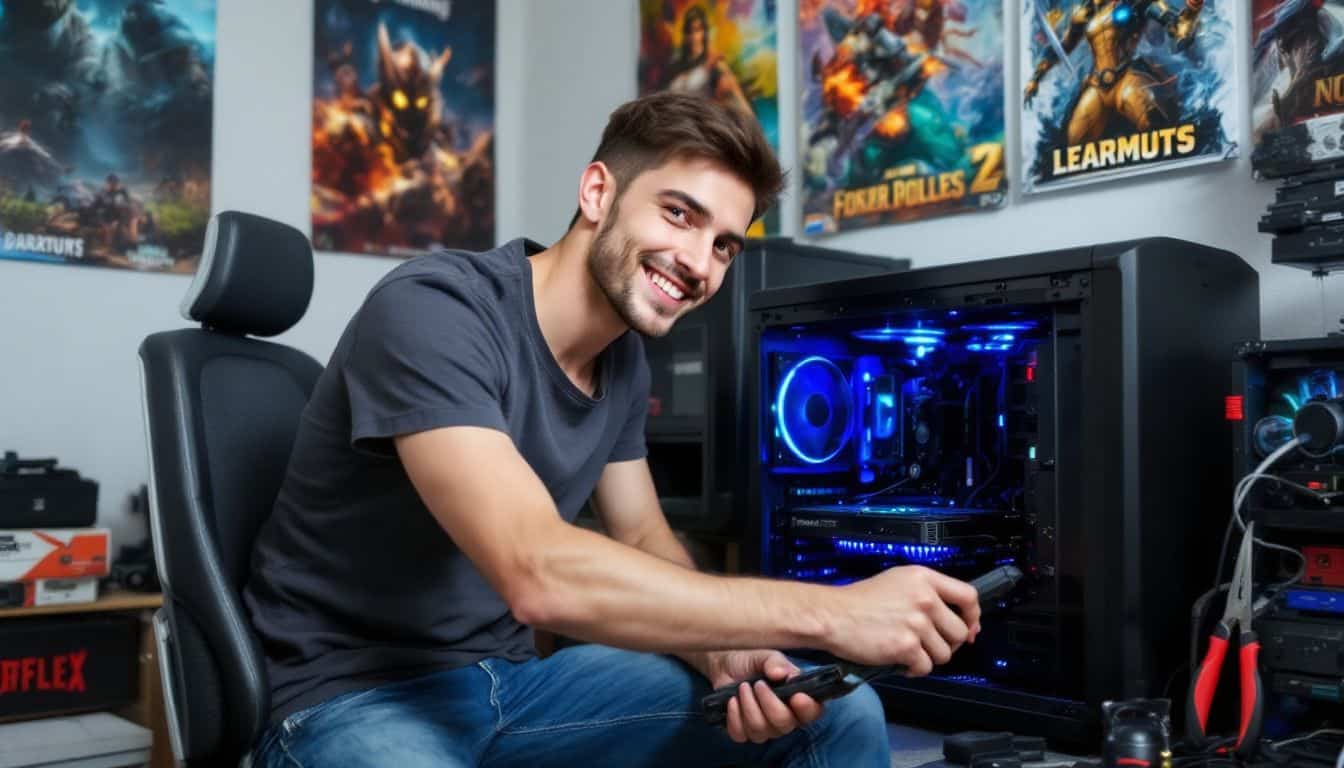
Gaming computers shine with their easy-to-swap parts – you can upgrade graphics cards, add more RAM, or switch to faster storage drives whenever you want to boost your gaming power…
Want to learn more about building your perfect gaming rig?
Designing for easy upgradability
Custom PCs excel at upgrades through smart design choices. Modern motherboards support multiple generations of processors – like AM5 boards working with Ryzen 7000 up to future Ryzen 9000 CPUs.
I learned this firsthand while building systems with expansion slots that make PC last longer through component updates.
The motherboard acts as the foundation, determining which parts you can upgrade later.
Smart cooling design gives you options to enhance thermal performance. You can start with basic air cooling and upgrade to advanced liquid cooling systems as needed. My experience shows that proper planning for upgrades saves money over time.
The right motherboard choice today opens paths for better CPUs, faster RAM, and stronger graphics cards tomorrow.
Cost-Benefit Analysis: Reviewing upgrade choices can aid in planning. Compare enhancements in rendering performance with list prices. Evaluate the benefits when upgrading components like random-access memory (ram), central processing units, and solid-state drives (SSD) against the cost of obtaining a new desktop pc.
Upgrade Considerations: Verify that your personal computer’s power supply meets the demands of improved components. Confirm your PSU is rated appropriately if adding advanced cooling systems or faster central processing units.
People Also Ask
What makes gaming computers different from regular computers?
Gaming computers have special parts like a strong graphics processing unit (GPU), better central processing unit (CPU), and more random access memory (RAM). They also use solid-state drives for faster game loading and special cooling systems for heavy use.
Which parts should I upgrade first in my gaming desktop?
Start with the graphics processing unit (GPU) – like NVIDIA GeForce or AMD Radeon. Then look at your CPU, RAM, and storage. Good power supplies and CPU coolers are also key for gaming desktops.
Do I need special gaming peripherals for my gaming setup?
Yes! Gaming mice with high dots per inch, mechanical keyboards with backlit keys, and good mousepads help you play better. Many gamers like the WASD layout and ergonomic designs for comfort.
How much RAM do I need for gaming?
Most modern PC games need at least 16 gigabytes of RAM. This helps with multitasking and running big games. Some high-performance computers use even more for better gaming and video editing.
Are gaming laptops as good as gaming desktops?
Gaming desktops offer more power and easier hardware upgrades than gaming laptops. But laptops give you portability. Brands like ASUS, Dell, and Lenovo make good gaming laptops with strong parts.
Can gaming computers handle virtual reality (VR)?
Yes! Gaming computers with good GPUs and CPUs can run VR games well. They need fast RAM, good cooling, and strong power supplies to give smooth three-dimensional (3D) graphics in virtual reality.
References
https://www.techspot.com/article/2308-cpu-cores-and-cache/ (2021-08-18)
https://linustechtips.com/topic/1520949-ssd-configuration-for-gaming-pc/ (2023-07-21)
https://antecblog.com/es/the-future-of-pc-cooling-trends-and-innovations/
https://powergpu.com/why-a-high-performance-cooling-solution-is-essential-for-gaming-pcs/
https://www.intel.com/content/www/us/en/gaming/resources/highest-refresh-rate-gaming.html
https://www.hp.com/us-en/shop/tech-takes/considerations-for-custom-gaming-pcs (2024-02-12)
https://www.instructables.com/How-To-Turn-Your-Household-Computer-Into-A-Gaming-/
Disclosure: This content is informational and not professional advice. The author has extensive experience building gaming computers and provides insights based on personal testing and industry standards. No affiliate links or sponsorships influenced the content.
